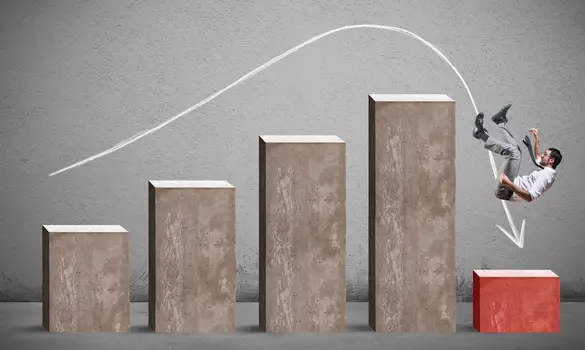
Small business owners in numerous industries file for small business bankruptcy. As a small business owner, you may be considering filing yourself. Most who do file feel that they have no other choice. If you are in a similar situation, it could be because you are drowning in personal debt. You could have also implemented poor bookkeeping strategies and failed to realize your company’s financial standing until it was too late. You may not have understood the negative effects of balance transfer checks. If you file for bankruptcy correctly, you could rid your business of debt. Read on to learn how to file for small business bankruptcy and start fresh.
Determine If You Should File
To guarantee yourself a fresh start, determine if you should file for small business bankruptcy before jumping into the process. Take a look at your personal assets. If they are not at risk, do not move forward with filing for bankruptcy. Typically, personal asset risk is an issue for sole proprietorships and partnerships. Majority of limited liability companies and corporations do not risk their personal assets when conducting business or starting new business ventures. However, if you own a LLC and failed to keep your personal finances separate from your company’s, your personal assets could be at risk. If this is the case, you could improve your financial status by filing for small business bankruptcy.
Calculate Your Debts
Upon filing for small business bankruptcy, you need to calculate your debts. This is a crucial step because you will use your calculations to determine the best chapter of bankruptcy to file for. For this reason, you need to perform the same calculations numerous times to double check your work. If you calculate incorrectly, you could put your business through the wrong chapter of bankruptcy. As a result, you could create a worse financial situation for yourself. Balance transfer options can assist you in managing your debt. To ensure that you improve your situation, calculate your debts properly before filing for small business bankruptcy.
Hire A Bankruptcy Attorney
After you calculate your debts, hire a bankruptcy attorney. Whether you have experience comprehending confusing financial information in the past or not, you need an attorney who specializes in your current situation. When business owners do not hire bankruptcy attorneys, they find themselves having trouble understanding the terms and conditions. As a result, they make incorrect calls that directly impact their businesses. You need to hire a bankruptcy attorney to assist you in deciding which chapter you should file for and explain the steps along the way. Look for a lawyer who has experience working with small business owners who filed for bankruptcy.
Choose A Chapter
If you find a reliable attorney who has experience in small business bankruptcies, work with them to decide which chapter is best for you. You have three options: Chapter 7, Chapter 11 and Chapter 13. While each option temporarily protects you from creditors, they are all different. More so, they provide different outcomes for small business owners. If you file for Chapter 7 bankruptcy, you will have to close and liquidate your business. Small business owners who choose Chapters 11 and 13 do not close their companies. Instead, they create repayment plans to ride themselves of debt. Teach yourself about the different chapters and then discuss them with your attorney. Then, you can file for small business bankruptcy and create a better future for yourself and your business.
Create A Payment Plan
In order to build a promising future for your currently indebted business, you need to create a payment plan to file for small business bankruptcy. This payment plan is for creditors. They require proof that you can and will pay them what you owe. During this process, your creditors will be separated into secured and unsecured creditors. While secured creditors obtain collateral, unsecured creditors do not. Because secured creditors can potentially acquire your company’s assets such as your equipment and building, repay them first. Then, move onto paying off your debt to unsecured creditors. Work with your bankruptcy lawyer to build and follow a realistic payment plan to get you out of small business debt. Then, you can start saving for retirement and increase your profits simultaneously.
Many small business owners file for small business bankruptcy in order to get out of debt and create a better future for their companies. To ensure that you should file, determine if your personal assets are at risk or not. Then, calculate your debts accurately. Hire a bankruptcy attorney who has experience successfully representing small business owners. They will assist you in choosing between Chapter 7, 11 and 13. Once you decide on a chapter, your attorney will work with you to create a payment plan that will get you out of debt. Check off each of the above steps to file for small business bankruptcy and start fresh.
 Business First Family Business, Accounting, Finance, Investing, Marketing And Management
Business First Family Business, Accounting, Finance, Investing, Marketing And Management